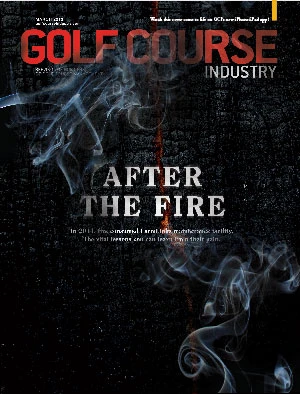 Monroe Miller Monroe Miller |
When politicians talked incessantly last year about falling off the fiscal cliff, superintendents, farmers and anyone else involved in production agriculture were worried about the moisture cliff we actually did fall off. Drought covered vast areas of the country and wild weather developed everywhere. It was the second costliest year for weather disasters ever, second only to 2005 (Katrina). This year we had Sandy, which was three times larger. Some places even had record flooding and 2012 was the warmest year in America since we started keeping track of such things. In our town we’ve had a lot of snow this winter, including a storm that dropped 21.5 inches in one shot. But the water equivalent of snow will not begin to mitigate the moisture deficit we were left with when last year ended. Around here we are beginning to wonder if 2013 will be like 1988. The velocity of weather changes is what is troubling to me. It happens so quickly – record flooding in 2011; record drought in 2012. The extremes are crazy. Recently, a comedian joke that 90 percent of us believe there are changes in the climate, and the other 10 percent are D.C. politicians! Gosh, even I am starting to realize the weather isn’t like it has been most of my life. Maybe global warming is for real. I am not ready to blame it all on America, however. Four scientists – one from Wisconsin, two from Boston U and one from Harvard – are using their own phenological data along with that from two renown naturalists – Aldo Leopold and Henry David Thoreau – to study the ecological effects of climate change. I am especially interested in their paper; I did a phenology study as part of a course in landscape plants nearly 45 years ago. Phenology is the study of the blooming or flowering date of plants, and my project required two daily trips to the UW arboretum that spring. What I feared was a major pain in my neck became a fascinating and educational experience. Leopold, author of “A Sand County Almanac,” and Thoreau, author of “Walden,” were meticulous record keepers. Thoreau’s records on blooming dates around Concord, Mass., were made in the middle 1800s. Leopold’s flowering dates were taken near his shack in south central Wisconsin, not far from where I live, between 1935 and 1945. His daughter resumed his work in 1977 and continued it until 2011. The authors used that information to predict some blooming dates last spring when the temperatures were way above normal. Their predictions were right on the mark. The take home from that exercise is that these early plant flowering dates were due to the warmer spring temperatures. The record temperatures of late spring led to some record early blooming times. Out east, around Concord, the study concluded that in an average year some flowers will bloom 11 days earlier than when Henry Thoreau was living in his cabin at Walden Pond. A dramatic example from Leopold’s data involves the black cherry (we had two of this large trees on our golf course). In 1942 the mean spring temperatures was 48 degrees F. and the black cherry bloomed on May 31st. Last year the mean spring temperature was 54 degrees F. and the black cherry bloomed as early as May 6th. That’s almost a month early. Before this study was published, plant scientists didn’t know if plants could keep blooming earlier and earlier as global warming increased. Controlled warming experiments like those conducted in a growth chamber or a biotron tended to under predict blooming dates when compared to what actually happens in outdoor or natural settings. Now they do know, because of the extreme weather of 2010 and 2012 and especially because Leopold and Throeau. Phenology may be less important to superintendents than orchard owners, unless you are working at a course like Augusta National Golf Club. For us, beautiful flowers might appear before the course is open, but the game itself won’t be affected. However, if fruit trees bloom early and before the bees arrive, there won’t be any pollination or fruit. Also, early blossoms are very susceptible to damage by a subsequent frost, something that happened in Door County, Wis., and Traverse City, Mich., last year. The cherry crop was destroyed. The study I reference here used flowering dates over a 161-year period in the eastern half of the U.S. I have opening day data that covers the last 40 years at my former golf course. I wonder if the warm springs have resulted in earlier openings? The question might require some statistical analysis . . . |
Get curated news on YOUR industry.
Enter your email to receive our newsletters.
Explore the March 2013 Issue
Check out more from this issue and find your next story to read.
Latest from Golf Course Industry
- Advanced Turf Solutions’ Scott Lund expands role
- South Carolina’s Tidewater Golf Club completes renovation project
- SePRO to host webinar on plant growth regulators
- Turfco introduces riding applicator
- From the publisher’s pen: The golf guilt trip
- Bob Farren lands Carolinas GCSA highest honor
- Architect Brian Curley breaks ground on new First Tee venue
- Turfco unveils new fairway topdresser and material handler





